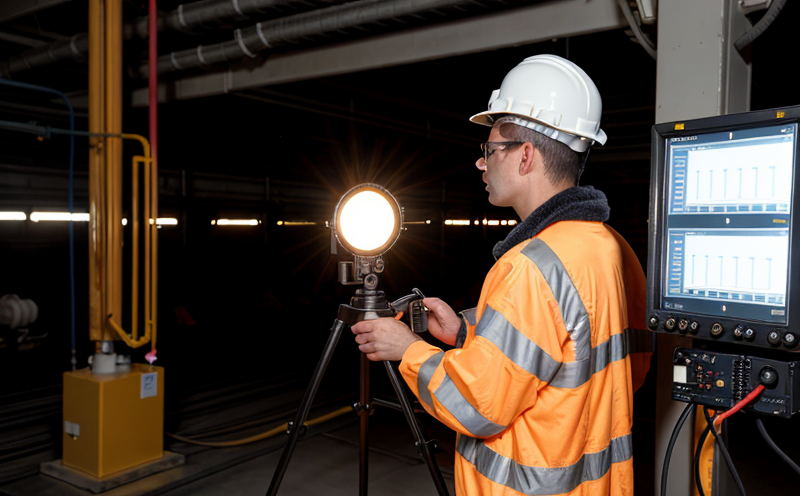Signal integrity inspection
The concept of signal integrity is fundamental in ensuring reliable and efficient operation within electrical and electronic systems. In the context of our laboratory, a signal integrity inspection ensures that signals are transmitted accurately from their source to destination without degradation or corruption. This service focuses on identifying any issues that may arise during the transmission process, such as reflections, crosstalk, attenuation, and distortion.
Signal integrity is critical in numerous sectors including telecommunications, aerospace, automotive electronics, medical devices, and consumer electronics. Ensuring robust signal integrity can prevent costly downtime, improve product reliability, and extend the lifespan of electronic components. Our team of experts uses cutting-edge technology to perform comprehensive inspections that cover both analog and digital signals.
The methodologies employed during a signal integrity inspection include the use of Vector Network Analyzers (VNAs), oscilloscopes, and specialized software tools designed for analyzing electromagnetic interference (EMI) and signal propagation. These instruments help us gather detailed data about the performance characteristics of the signals under test. From there, we can identify potential areas where improvements are necessary.
The importance of signal integrity cannot be overstated; it directly impacts system performance metrics like bit error rate (BER), latency, jitter, and bandwidth utilization. By conducting thorough inspections, we provide clients with actionable insights that guide them towards making informed decisions about their designs and manufacturing processes.
For those working in R&D environments, understanding how different components interact within a larger system is crucial for innovation. Our signal integrity experts can assist by simulating various scenarios to predict outcomes before implementation. This proactive approach helps reduce risks associated with unforeseen failures or malfunctions during production stages.
Quality managers and compliance officers will find value in knowing that our services adhere strictly to international standards such as ISO/IEC 17025, which guarantees impartiality, competence, and consistent quality across all aspects of the inspection process. Compliance with these standards ensures not only accurate results but also peace of mind regarding regulatory requirements.
In summary, a signal integrity inspection serves multiple purposes: it enhances reliability, reduces costs associated with rework or failure, supports innovation through informed decision-making, and provides assurance that products meet necessary regulatory expectations. Through our advanced tools and experienced personnel, we offer clients unparalleled support in maintaining top-notch performance within their electronic systems.
Scope and Methodology
The scope of a signal integrity inspection encompasses several key areas aimed at ensuring optimal performance across various types of electrical and electronic systems. Our approach involves rigorous testing procedures that cover both initial design validation phases as well as ongoing production quality assurance checks.
- Initial Design Validation: This phase focuses on verifying that the proposed design meets specified performance criteria before moving into large-scale manufacturing. We perform simulations using industry-standard software tools to predict potential issues early in the development cycle.
- Production Quality Assurance Checks: Once a product has entered mass production, regular inspections are conducted to ensure consistent quality levels. This includes checking for any signs of degradation over time due to environmental factors like temperature fluctuations or mechanical stress.
To achieve these objectives, we utilize state-of-the-art equipment such as VNAs and oscilloscopes. These instruments allow us to measure key parameters related to signal integrity including return loss, insertion loss, phase shift, rise time, fall time, overshoot, undershoot, and eye diagrams. Additionally, advanced algorithms embedded within our software packages enable detailed analysis of complex waveforms.
Our methodology also emphasizes collaboration between technical staff and clients throughout the entire process. This collaborative approach ensures that any concerns or questions raised by either party are addressed promptly, leading to more accurate assessments and faster resolution times.
Environmental and Sustainability Contributions
In addition to supporting industries focused on signal integrity within electrical and electronic systems, our laboratory also plays a significant role in promoting environmental sustainability. By offering precise inspections that help prevent product failures, we contribute indirectly to reducing waste streams associated with discarded electronics.
The accurate identification of issues during early stages of development enables designers to make necessary adjustments without having to scrap entire batches of products. This not only conserves resources but also reduces energy consumption and greenhouse gas emissions linked to manufacturing processes.
Moreover, our commitment to adhering strictly to international standards like ISO/IEC 17025 ensures that our results are reliable and repeatable. Such consistency allows manufacturers to confidently implement changes based on our findings without fear of variability or inconsistency in outcomes.
We recognize the importance of continuous improvement when it comes to environmental practices. Therefore, we regularly review our procedures to incorporate new technologies and methodologies aimed at further enhancing efficiency and minimizing ecological impact.





